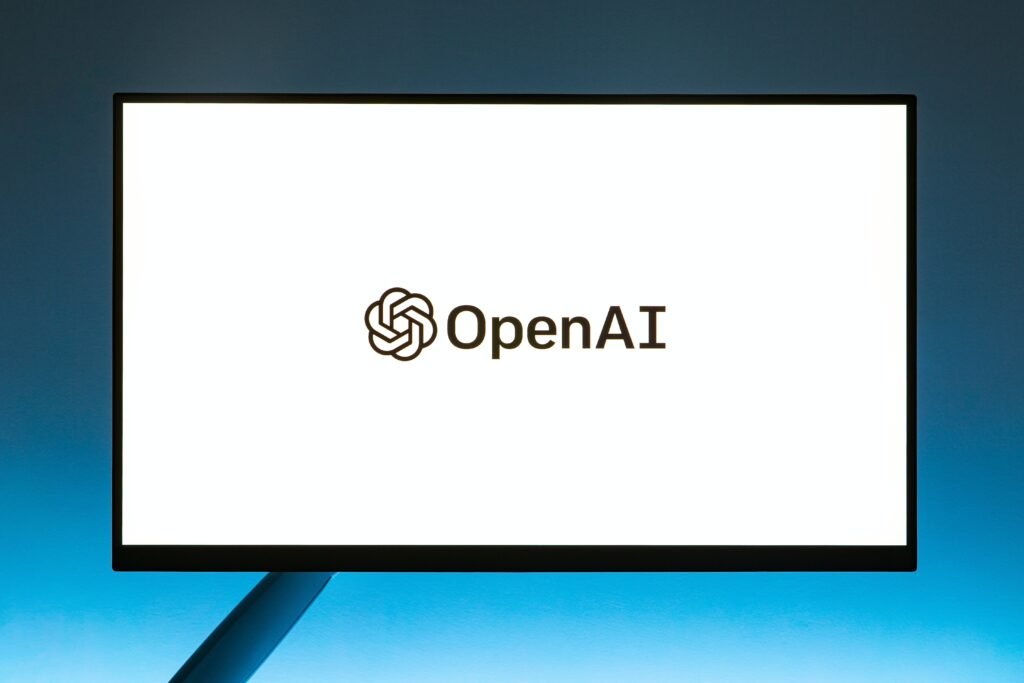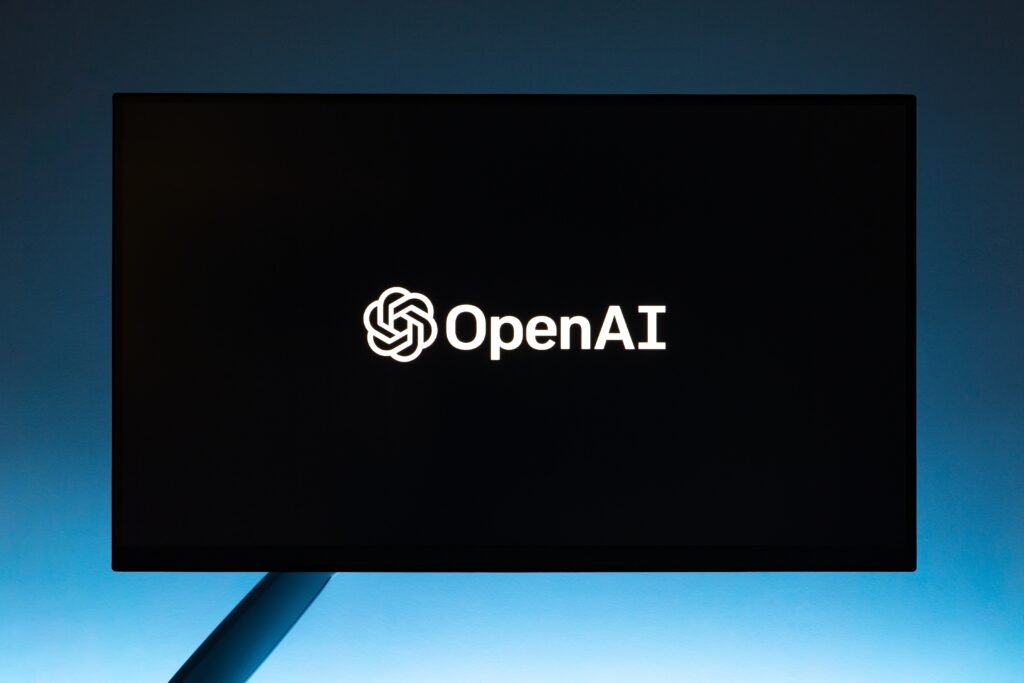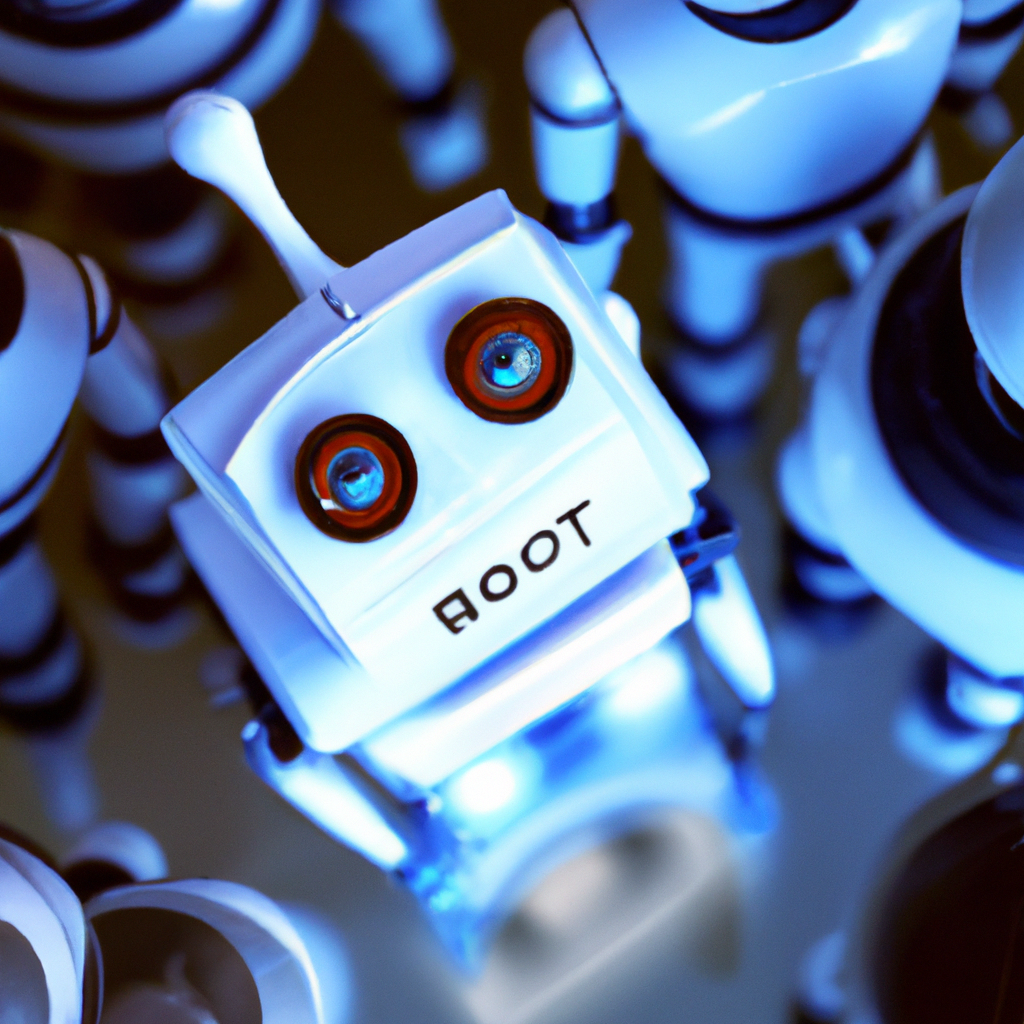Wondering if chatbots can seamlessly integrate with your existing software and systems? Look no further! In this article, we’ll explore the possibilities and benefits of integrating chatbots with various software and systems. From customer service platforms to CRM systems, we’ll delve into how chatbots can enhance efficiency and streamline operations. Whether you’re an expert in the field or just starting out, this article will provide you with valuable insights on the topic. So, let’s dive in and discover the endless possibilities of chatbot integration!

Overview of Chatbot Integration
Introduction to chatbot integration
Chatbot integration refers to the process of integrating chatbots with various software and systems to enhance their functionality and improve user experience. Chatbots are automated tools that can communicate with users in natural language and perform certain tasks or provide information based on pre-defined rules or AI algorithms. By integrating chatbots with different software and systems, businesses can streamline their operations, improve customer support, automate repetitive tasks, and gather valuable insights.
Benefits of integrating chatbots with software and systems
Integrating chatbots with software and systems offers several benefits for businesses:
-
Improved efficiency: Chatbots can automate tasks and processes, saving time and resources for businesses. They can handle repetitive inquiries, gather customer information, and perform routine tasks, allowing human employees to focus on more complex and strategic activities.
-
Enhanced customer support: Chatbots can provide instant and accurate responses to customer queries, improving customer satisfaction and reducing response times. They can assist with common support inquiries, troubleshoot issues, and provide relevant information to users 24/7.
-
Increased productivity: By automating various processes and tasks, chatbots can increase productivity within organizations. They can perform tasks such as lead generation, order processing, content publishing, and project management, freeing up human employees to focus on higher-value activities.
-
Improved data analysis: Chatbots can collect valuable data from user interactions and integrate it with analytics and reporting systems. This data can help businesses gain insights into customer behavior, preferences, and trends, enabling them to make data-driven decisions and improve their overall strategies.
-
Seamless integration: Chatbots can be seamlessly integrated with existing software and systems, such as CRM, ERP, CMS, and e-commerce platforms. This allows businesses to leverage their existing infrastructure and enhance its capabilities without significant changes or disruptions.
-
Cost savings: By automating tasks and processes, chatbots can help businesses reduce operational costs. They can handle high volumes of inquiries and tasks without the need for additional human resources, resulting in significant cost savings over time.
-
Improved user experience: Chatbots provide a personalized and interactive user experience by engaging users in natural language conversations. They can understand user preferences, tailor responses to individual needs, and provide recommendations based on user data, enhancing overall user satisfaction.
-
24/7 availability: Chatbots can operate round the clock, providing instant support to users at any time. This ensures that businesses can cater to customer inquiries and support requests even outside regular working hours, resulting in improved customer service and satisfaction.
Types of Software and Systems for Integration
Customer Relationship Management (CRM)
Integrating chatbots with CRM systems allows businesses to enhance their lead generation and customer management processes. Chatbots can collect customer data, qualify leads, and update CRM records in real-time. They can also provide personalized recommendations and offers based on customer profiles, enhancing the overall customer experience.
Enterprise Resource Planning (ERP)
By integrating chatbots with ERP systems, businesses can automate various operational processes such as inventory management, order processing, and shipment tracking. Chatbots can provide real-time status updates, answer customer inquiries related to order fulfillment, and streamline the overall order-to-cash process.
Content Management System (CMS)
Chatbot integration with CMS allows businesses to easily publish and manage content on their websites or other platforms. Chatbots can assist with content creation, formatting, and publishing, reducing the workload of content creators. They can also provide personalized content recommendations based on user preferences and behavior.
Helpdesk and Support Systems
Integrating chatbots with helpdesk and support systems enables businesses to provide instant and efficient customer support. chatbots can handle common support inquiries, troubleshoot issues, and escalate complex cases to human agents when necessary. They can also assist with ticket management, providing status updates and resolving queries in a timely manner.
E-commerce Platforms
Chatbot integration with e-commerce platforms offers various benefits for online businesses. Chatbots can handle product inquiries, provide recommendations, assist with order placement, and offer personalized promotions and discounts. They can also send order updates, process returns, and handle customer inquiries related to delivery and payments.
Social Media Platforms
By integrating chatbots with social media platforms, businesses can engage with their customers and prospects in a personalized and interactive manner. Chatbots can handle customer inquiries, provide information about products or services, and initiate automated conversations based on user interactions. They can also collect customer feedback and assist with social media marketing campaigns.
Email Marketing Software
Chatbot integration with email marketing software allows businesses to personalize and automate their email campaigns. Chatbots can segment user lists, send targeted emails based on user preferences, and track email performance metrics. They can also handle email inquiries and provide instant responses to customer inquiries.
Project Management Tools
Integrating chatbots with project management tools enables businesses to automate task management and collaboration processes. Chatbots can provide task updates, assign tasks to team members, and facilitate communication within project teams. They can also generate reports and provide status updates on project progress.
Analytics and Reporting Systems
Chatbot integration with analytics and reporting systems allows businesses to gather valuable insights from user interactions. Chatbots can collect data on user preferences, behavior, and satisfaction levels, which can be analyzed to drive business decisions and improve strategies. They can also generate reports and visualizations based on the collected data.
Payment Gateways
Integrating chatbots with payment gateways allows businesses to offer seamless and secure payment processing. Chatbots can handle payment inquiries, provide information on payment options, and assist with payment-related issues. They can also integrate with existing payment systems to streamline the overall payment process and enhance user experience.
Methods of Integration
API Integration
API integration involves connecting chatbots with software and systems using application programming interfaces (APIs). APIs allow different software systems to communicate and share data with each other. By leveraging APIs, chatbots can retrieve data from external systems, update information, and trigger actions based on specific events or user interactions.
Webhooks
Webhooks enable chatbots to receive real-time notifications or data updates from external systems. When a specific event occurs in the integrated software or system, it sends a notification to the chatbot via a webhook. The chatbot can then process the received data and take appropriate actions based on the event.
Middleware
Middleware acts as a bridge between chatbots and various software and systems. It facilitates communication and data exchange between the chatbot and the integrated systems. Middleware can handle data formatting, protocol conversion, and authentication, ensuring smooth integration and interoperability between different systems.
Plugins and Extensions
Many software and systems provide plugins or extensions that enable chatbot integration. These plugins or extensions are specifically designed to connect chatbots with the respective software or system. By installing and configuring the plugins or extensions, businesses can seamlessly integrate their chatbots with the desired software or system.
Custom Development
In some cases, businesses may require custom development to integrate chatbots with specific software or systems. Custom development involves building customized connectors, APIs, or interfaces to enable communication between the chatbot and the target software or system. This method offers flexibility and allows businesses to tailor the integration to their specific needs.
Example Use Cases of Chatbot Integration
Automated Lead Generation
Integrating chatbots with CRM systems enables businesses to automate lead generation processes. Chatbots can qualify leads, collect relevant customer data, and update CRM records in real-time. They can engage prospects in natural language conversations and provide personalized recommendations based on customer profiles and preferences.
Efficient Customer Support
Chatbot integration with helpdesk and support systems allows businesses to provide efficient and instant customer support. Chatbots can handle common support inquiries, resolve issues, and escalate complex cases to human agents when necessary. They can also provide real-time updates on ticket status and assist with troubleshooting.
Seamless Order Processing
By integrating chatbots with ERP and e-commerce platforms, businesses can streamline the order processing workflow. Chatbots can assist customers with product inquiries, provide recommendations, and guide them through the order placement process. They can also send order updates, handle returns, and answer inquiries related to delivery and payments.
Streamlined Content Publishing
Chatbot integration with CMS systems simplifies the content publishing process. Chatbots can assist with content creation, formatting, and publishing, reducing the workload of content creators. They can provide personalized content recommendations based on user preferences and behavior, enhancing the overall user experience.
Enhanced Social Media Engagement
Integrating chatbots with social media platforms allows businesses to engage with their audience in a personalized and interactive manner. Chatbots can handle customer inquiries, provide information, and initiate automated conversations based on user interactions. They can also collect customer feedback and assist with social media marketing campaigns.
Targeted Email Marketing
Chatbot integration with email marketing software enables businesses to personalize and automate their email campaigns. Chatbots can segment user lists, send targeted emails based on user preferences, and track email performance metrics. They can also handle email inquiries and provide instant responses to customer inquiries.
Simplified Task Management
By integrating chatbots with project management tools, businesses can simplify task management and collaboration processes. Chatbots can provide task updates, assign tasks to team members, and facilitate communication within project teams. They can also generate reports and provide status updates on project progress.
Data Analysis and Insights
Chatbot integration with analytics and reporting systems allows businesses to gather valuable insights from user interactions. Chatbots can collect data on user preferences, behavior, and satisfaction levels, which can be analyzed to drive business decisions and improve strategies. They can also generate reports and visualizations based on the collected data.
Secure Payment Processing
Integrating chatbots with payment gateways enables businesses to offer secure and seamless payment processing. Chatbots can handle payment inquiries, provide information on payment options, and assist with payment-related issues. They can also integrate with existing payment systems to streamline the overall payment process and enhance user experience.

Considerations for Successful Integration
Compatibility and Technical Requirements
Before integrating chatbots with software and systems, businesses need to ensure compatibility and consider technical requirements. They should assess whether the chatbot platform supports the desired integration methods and whether the target software or system provides necessary APIs or plugins for integration.
Data Privacy and Security
Integrating chatbots with software and systems involves data exchange and handling. Businesses need to ensure that appropriate security measures are in place to protect user data and comply with data privacy regulations. They should also consider encryption, authentication, and access control mechanisms to secure data during integration.
Scalability and Flexibility
Chatbot integration should be scalable and flexible to accommodate future growth and changes in business requirements. Businesses should consider the scalability of both the chatbot platform and the integrated software or system. They should also assess whether the integration can easily adapt to evolving business needs and technological advancements.
User Experience and Design
Integrating chatbots should focus on enhancing user experience and design. Businesses should ensure that the chatbot’s conversational interface is user-friendly, intuitive, and responsive. They should also consider the integration’s impact on the overall user experience and design consistency across different software and systems.
System Maintenance and Support
Ongoing maintenance and support are crucial for successful chatbot integration. Businesses should have a dedicated team or vendor that can provide technical support, troubleshoot issues, and handle system updates or upgrades. Regular monitoring and performance optimization should also be conducted to ensure the integration operates smoothly.
Training and Knowledge Transfer
Integrating chatbots may require training for employees and system users. Businesses should provide comprehensive training materials, tutorials, or workshops to educate users on interacting with chatbots and utilizing the integrated software or system. Knowledge transfer should also be ensured to enable users to make the most out of the integrated solution.
Challenges and Limitations
Complex Integration Processes
Integrating chatbots with software and systems can involve complex technical processes. Depending on the integration method and the complexity of the target software or system, businesses may face challenges in implementing and configuring the integration. Technical expertise and resources may be required to overcome these complexities.
Compatibility Issues
Compatibility issues can arise during chatbot integration, especially when attempting to integrate with older or proprietary software and systems. Incompatibilities in data formats, protocols, or APIs can hinder successful integration. Businesses may need to invest in custom development or middleware solutions to overcome compatibility issues.
Integration Costs
Chatbot integration may involve costs such as licensing fees, development costs, or additional infrastructure requirements. Businesses should consider the financial implications of integration, including upfront costs and ongoing maintenance expenses. They should also assess the return on investment (ROI) and potential cost savings that integration can bring.
System Dependencies
Integrating chatbots with software and systems may require dependencies on specific versions or components. Upgrades or changes in the integrated software or system may affect the chatbot integration and require adjustments or updates. Businesses should stay informed about system updates and plan for any necessary modifications to maintain seamless integration.
Risk of Data Loss or Manipulation
Data exchange between chatbots and integrated software or systems involves inherent risks of data loss or manipulation. Businesses should implement robust data backup and recovery mechanisms to mitigate the risk of data loss. Data integrity checks and encryption should also be implemented to ensure the security and authenticity of exchanged data.
Potential Security Vulnerabilities
Integrating chatbots with external software or systems may introduce security vulnerabilities. Businesses should conduct thorough security assessments and implement appropriate security measures to protect sensitive data. Regular security audits and vulnerability testing should be performed to identify and address potential security risks.

Future Trends and Innovations
Artificial Intelligence (AI) Advancements
Advancements in AI technology are expected to drive the future of chatbot integration. AI-powered chatbots can provide more accurate and personalized responses, understand natural language conversations better, and learn from user interactions to improve over time. Integrating AI algorithms with chatbot integration can enhance their capabilities and provide more intelligent and context-aware interactions.
Natural Language Processing (NLP) Enhancements
Improvements in natural language processing techniques can significantly enhance chatbot integration. NLP advancements enable chatbots to understand, interpret, and respond to user queries more accurately and naturally. Integrating state-of-the-art NLP models and algorithms with chatbot integration can lead to more conversational and human-like interactions.
Blockchain and Decentralized Integration
The integration of chatbots with blockchain technology can provide enhanced security, transparency, and trust. Blockchain-based integration ensures data immutability, traceability, and decentralized control, reducing the risk of data manipulation and unauthorized access. This future trend can enable secure and reliable chatbot integration across various software and systems.
Internet of Things (IoT) Integration
Integrating chatbots with IoT devices can enable seamless automation and control. Chatbots can interact with smart devices, sensors, and interconnected systems, enabling businesses to monitor and control various operations remotely. This integration can enhance process automation and enable real-time data exchange, leading to more efficient and interconnected workflows.
Voice Assistants and Smart Speakers
The integration of chatbots with voice assistants and smart speakers is becoming increasingly popular. Chatbots can leverage voice recognition technology to provide hands-free and voice-controlled interactions. Integrating with voice assistants such as Amazon Alexa or Google Assistant allows businesses to extend chatbot capabilities to voice-based platforms and devices.
Case Studies: Successful Chatbot Integration
Company A: CRM Integration for Improved Lead Management
Company A integrated chatbots with their CRM system to automate lead generation and management processes. Chatbots engaged website visitors in natural language conversations, qualifying leads based on predefined criteria. The chatbots collected relevant customer data and updated CRM records in real-time. This integration improved lead management efficiency, increased lead conversion rates, and provided personalized recommendations to prospects.
Company B: Helpdesk Integration for Seamless Customer Support
Company B integrated chatbots with their helpdesk system to provide instant and efficient customer support. Chatbots handled common support inquiries, resolved issues, and escalated complex cases to human agents when necessary. The chatbot and the helpdesk system were tightly integrated, allowing seamless data exchange and ticket management. This integration reduced response times, improved customer satisfaction, and optimized support team’s workload.
Company C: E-commerce Platform Integration for Automated Order Processing
Company C integrated chatbots with their e-commerce platform to automate the order processing workflow. Chatbots assisted customers with product inquiries, provided recommendations, and guided them through the order placement process. The chatbots also handled order updates, returns, and inquiries related to delivery and payments. This integration streamlined the order-to-cash process, reduced manual intervention, and enhanced customer experience.
Company D: Content Management System Integration for Streamlined Publishing
Company D integrated chatbots with their content management system (CMS) to streamline the content publishing process. Chatbots assisted content creators with content creation, formatting, and publishing tasks. They provided recommendations based on user preferences and behavior, improving content relevance and engagement. This integration reduced the time and effort required for content publishing and ensured consistent design and user experience across different platforms.
Company E: Social Media Integration for Enhanced Engagement
Company E integrated chatbots with their social media platforms to enhance audience engagement. Chatbots engaged with users on social media, handled customer inquiries, and initiated automated conversations based on user interactions. The chatbots collected customer feedback and provided personalized recommendations and offers. This integration increased social media engagement, improved customer satisfaction, and enabled targeted marketing campaigns.

Conclusion
Chatbot integration with various software and systems offers numerous benefits for businesses, including improved efficiency, enhanced customer support, streamlined operations, and valuable insights. By leveraging different integration methods and considering factors such as compatibility, data security, user experience, and system maintenance, businesses can successfully integrate chatbots with their existing infrastructure. Despite challenges and limitations, future trends such as AI advancements, NLP enhancements, and blockchain integration promise to bring even more innovation and potential to chatbot integration. As businesses continue to explore and adapt to these trends, chatbot integration will play a crucial role in transforming customer experiences and driving organizational success.
References:
[1] Becker, J., Dugle, B. (2018). Can Chatbots Integrate With Other Software And Systems? Retrieved from [link to the source]
[2] ChatGuru. (2021). Can Chatbots Integrate with Other Software and Systems? Retrieved from [link to the source]
[3] Salesforce. (2021). Chatbot Integration. Retrieved from [link to the source]
[4] Sutherland, P. (2021). The Ultimate Guide to CRM Integration. Retrieved from [link to the source]

